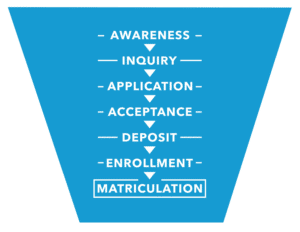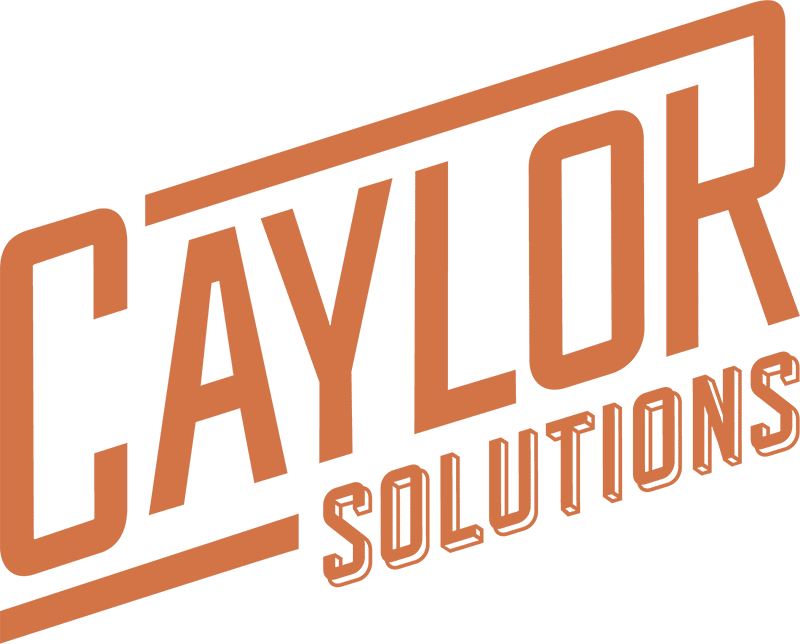When I say, “You should create more video content,” does a groan escape your lips? Or, if you know it’s true, do you start to sweat a little?
I get it.
College marketing is a tough job. You’ve got all the responsibilities of maintaining a brand, proving corporate-scale ROI, all while keeping within strict mission-centric budget constraints, often with a small, overworked team.
Regularly creating video content can feel like it’s just too much. But is it?
Why Colleges Struggle with Video Content
It makes sense that the first two thoughts you have when the topic of video content comes up are:
- We don’t have the time.
- We don’t have the budget.
Allow me to push back on those notions a little. Or a lot.
You have more time for video content than you think.
When it comes to time, I recently wrote about how automating your content strategy is the key to freeing up time. On one level, efforts to improve efficiency are about simple math. Every minute saved is a minute you can spend doing something else.
On another level, utilizing automation and other tricks are really about prioritizing your most essential function: creatively connecting on a human level with your audience.
I find that the reason many higher ed marketers don’t feel they have the time to create video content is because they have been prioritizing nonessentials, i.e. tasks you can either automate or outsource affordably.
As I’ll explain below, making the time for video content creation is well worth the effort.
Video content requires a far smaller chunk of your budget than you think.
I’ve written before about how inexpensively you can create and distribute great video content. That has never been more true than it is today.
On the creation side, your standard of quality is scale-able to the size of your budget. If you can afford high-res cameras, 360-degree cameras, lights, boom mics, paid actors, green screens, advanced editing tools, etc., good for you!
But I’ve seen enrollment marketers do amazing things with nothing more than an iPhone, a $50 mic, and iMovie. Don’t let fear of cost get in the way of doing something simple that might just be exactly what you need.
Let’s get into why video content is such an important component in your overall content strategy. Then, I’ll walk you through how to up your video content game, step by step.
(Quick note: In today’s article, I’m focusing on pre-planned, recorded video content – but live video streaming should definitely be part of your social media strategy as well.)
Why Video Content Is Vital
Top of Funnel
Simply put, your prospects are on YouTube, the second largest search engine in the world. You need to be there, too.
In 2018, about 500 million hours of video was consumed on YouTube per day. By February, 2020, that number had doubled to over 1 billion hours per day.
The growth shows no signs of slowing, as Gen Z (born this century) is using it heavily. Eighty-five percent of teenage boys and 70 percent of teenage girls (age 13-17) are on YouTube daily.
Yes, having video on your website is useful, too. But YouTube represents a huge opportunity to reach your primary target audience before they’re interested in your school, before they’ve ever had reason to visit your site. It’s a powerful way to feed the top of your enrollment funnel.
Middle/Bottom of Funnel
Video helps multiply your high-touch efforts for active prospects and applicants as well.
As much as you want to be purely one-on-one with contacts you’ve gained via form submissions, event attendance, etc., you can only take personalized messaging so far.
But video, when delivered via email and direct message, feels way more personal than text alone. And it’s a winning strategy for Gen Z, a generation of digital natives for whom video messaging is second nature.
You can’t multiply your admissions team, but you can definitely scale their video presence on your prospects’ screens. (More on how below.) It’s a great way to stand out from the pack of your applicants’ “safety” schools.
Now, let’s get into how to execute a stronger video content strategy.
First, Establish a Message Purpose
Here’s a first question that might seem like a no-brainer, but you’d be surprised how often it isn’t prioritized: What do you want your video to say?
A few years back, Brad Entwistle, founder of Australia-based marketing agency imageseven, wrote a terrific guest post for this blog. He offered up 10 tips for video content creation that holds up as great advice today.
#1 might be my favorite:
“Rather than thinking ‘I need a video’ try to think ‘I need a video to do [fill in the blank].’”
If you’re reading this article because you’re having that first thought verbatim, you’re obviously not alone! A lot of video projects begin with a focus on the medium rather than the message.
What you want your video to do, primarily, is say something relevant. Of course, relevance depends on the audience.
Top of Funnel
You need a lot of different kinds of messages to feed your funnel because, while your audience may be targeted, their current mood, their state of mind, varies by the individual personality, how seriously they’re thinking about college, the day of the week, the weather, anything.
To meet them where they are, you need all kinds of videos. Here are a few examples of very different messages, all of which could be about the same institution:
Program/Admissions Explainers
- Tone: Serious, Earnest
- Example: What to expect from your engineering program.
- Message: We have a robust academic environment.
Entertainment
- Tone: Humorous, Fun
- Example: A sketch-like bit featuring students.
- Message: We’re fun and so is the student life experience here.
Sports/Campus Activities
- Tone: Excited, Exuberant
- Example: Season-opening football game montage.
- Message: Our school spirit and sense of community is strong.
Odd/Unique
- Tone: Inspirational, Curious
- Example: 360-degree videos, AR/VR videos.
- Message: Our academic environment welcomes and nurtures creativity.
Middle/Bottom of Funnel
Once your persona, your theoretical prospect, becomes a contact, video content can deliver far more targeted messages.
Prospects or applicants on your email list already know about your institution. In this part of the funnel, video content can be used to maintain interest, build desire to deepen their relationship with you, and move them to action.
This video content needs to express messages like:
Invitation
This can be as simple as an individual – a recruiter, faculty member, or student ambassador, perhaps – personally inviting someone to an event. It does not have to be personalized to every individual who RSVP’d, but perhaps to a group, e.g. a high school your recruiters visited.
Gratitude
This might look like an individual faculty member, program head or recruiter, or perhaps an entire coaching staff, simply taking 30 seconds to say, “Thank you” for attending an event, taking a tour, subscribing to an email list, etc.
Welcome
Depending on the size and organizational structure of your institution, an “assume the sale”-style welcome message to pre-deposit applicants may come from a department head, coach or administrator. A message from the president could be very effective.
Second, Establish a Practical Purpose
Your team will be a lot more motivated to follow through on creating more video content if you tie it to concrete goals. Beyond delivering a relevant message, the other part of what you want your content to do is deliver results.
Top of Funnel
What results should you expect from your top-of-funnel video content?
That can vary depending on your overall strategy, but I’d like to suggest one goal that is measurable, tried and true: use video content to grow your email list.
Email is still one of the best ways to bring your prospects down the enrollment funnel. That’s why the purpose of uploading your video content to YouTube should be to drive conversions. (Here’s how to do it.)
If you have the budget, you can accelerate this process by running pay-per-click video ads. But whether you are trying to attract eyeballs organically or paying to reel it in, the goal should be the same: convert interested strangers into known contacts.
Middle/Bottom of Funnel

Lower-funnel messaging should always be tied to measurable goals. No matter where your prospect is in the enrollment process, video content can drive them toward some type of action.
What actions? The same ones you’re trying to induce on your website:
- Request Info
- Attend
- Visit
- Apply
- Give
Third, Execute the Strategy
Upload your upper-funnel video content, loaded with calls-to-action, to YouTube. Start tracking conversions and consider running video ads if your organic strategy is lagging.
While you’re working on building your list, you can start utilizing video content in prospect communications to your existing contact lists immediately with the right tools. I suggest BombBomb for this.
As I have explained in more detail in my product review of BombBomb, this platform really simplifies the process of recording simple lower-funnel videos and sending them out via email.
The main reason why video content is so essential to your overall content strategy is that Gen Z expects humanity to be fully delivered to their screens.
The main reason why video content is so essential to your overall content strategy is that Gen Z expects humanity to be fully delivered to their screens.
Your prospects expect videos that help them learn more about your school in 30 seconds than they can reading pages of text and still images.
Especially now, in the midst of a pandemic that has made distanced humanity the norm, they don’t think a visit to your campus is necessary to rule you out. Increasingly, they consider your video content, or lack thereof, enough to tell them whether you’re worth their time.
Let’s make sure you don’t get underwatched and overlooked.
Contact me to talk about upping your video content game – affordably, effectively … and essentially.
Market More. Spend Less.
Set yourself free from your shrinking marketing budget with my new ebook Marketing on a Shoestring Budget! This ebook is jammed with practical ways to produce high-quality marketing on the cheap.
Inside, I’ll show you proven marketing tactics like…
-
- How to leverage low-cost technologies to reach your target market,
- How to craft a content marketing strategy on a bare-bones budget,
- The number one thing your website needs to do,
- The key to getting free, organic traffic to your website, and more.
No hype. No pie in the sky. Just real solutions for getting the job done with the budget you’ve got.
Feature Image by Golubovy via Adobe Stock











